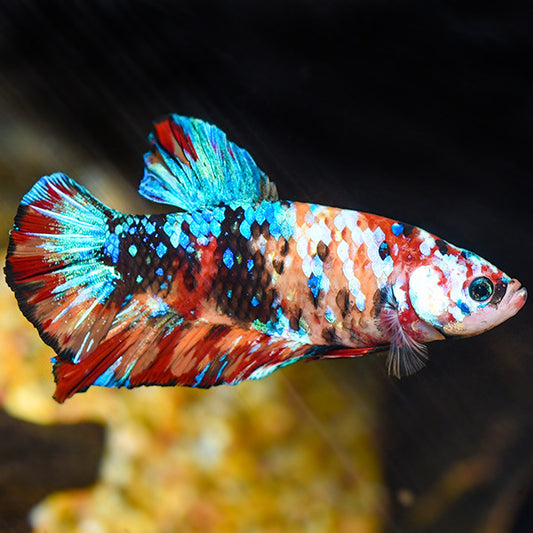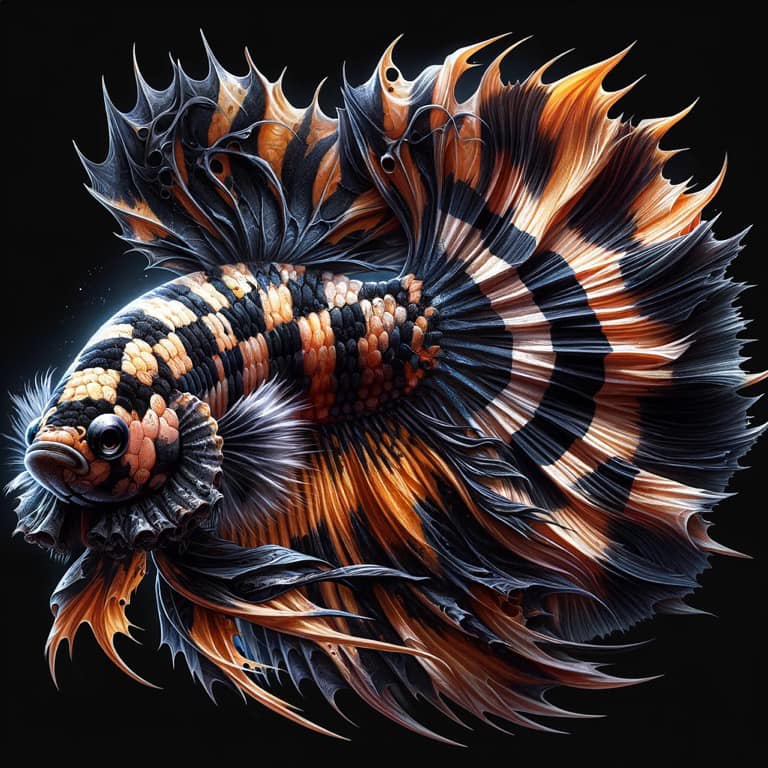Reproducing Betta Fish: a Comprehensive Step-By-Step Overview to Successfully Raising Child Bettas From Eggs to Adulthood
Reproducing Betta fish is a meticulous undertaking that calls for careful planning and implementation to ensure the effective advancement of fry from eggs to grow fish. Choosing genetically diverse reproduction couple with preferable characteristics is just the start; creating an optimal atmosphere and recognizing the intricacies of the breeding process are similarly vital. As the male Betta vigilantly constructs a bubble nest and guards the priceless eggs, the succeeding phases of care and transition demand attention to information and understanding of ideal practices. Just how does one browse the difficult yet satisfying path of supporting these vivid animals to the adult years?

Picking Reproduction Pairs
When beginning on the journey of breeding Betta fish, picking the ideal breeding sets is critical to achieving preferable attributes and a healthy and balanced lineage - betta fish. The first step in this procedure is to identify the details characteristics you wish to enhance or preserve, such as shade, fin kind, and physique. It is vital to select genetically varied pairs to prevent inbreeding, which can lead to wellness issues and unwanted attributes
Evaluate prospective reproducing candidates very carefully. A healthy and balanced male Betta should display vibrant shades, an energetic disposition, and well-formed fins, while the lady ought to additionally display lively coloration and a rounded stubborn belly, indicating preparedness for spawning. Observing the personality of both fish is important, as hostile or extremely shy people might not breed effectively.
Maintaining documents of the moms and dad fish's origins can help you track genetic qualities and possible issues. Ultimately, investing time in the choice procedure will significantly improve the likelihood of producing strong, lively offspring that satisfy your reproduction objectives.

Preparing the Breeding Tank
Creating an optimum breeding environment is a vital step after picking ideal pairs for Betta fish. The breeding tank should be especially designed to offer comfort and stimulate the all-natural reproduction behaviors of the fish. Start with a container dimension of a minimum of 10 gallons to make sure ample space for both the man and female Bettas.
Maintain a gentle filtration system to keep the water clean while preventing strong currents that can worry the fish. In addition, an air rock can be included in give oxygenation without interfering with the water surface area as well much.
Temperature policy is vital; goal for a steady variety of 78-82 ° F(25-28 ° C) utilizing a dependable heater. The pH degree ought to be preserved between 6.5 and 7.5, and routine water adjustments are required to make certain high water quality.
Integrate drifting plants or generating mops to produce concealing places for the female, while additionally urging bubble nest building by the male - betta fish. Ensure the storage tank is complimentary from sharp decors and any kind of possible hazards, as the welfare of the fish should always be prioritized during this vital phase of breeding.
The Breeding Process
Usually, the reproducing procedure for Betta fish includes a series of unique and evident habits that suggest readiness for reproduction. The male Betta begins by building a bubble nest at the water's surface, which functions as a site for the fed eggs. This nest is critical, as it provides a safe setting for the eggs till they hatch out.
When the nest is established, the male will display courtship actions, such as flaring his fins and showing vivid shades to draw in the woman. The female, upon sensing the male's readiness, will certainly react by presenting upright stripes along her body, signaling her receptiveness.
When the female approaches, the male takes part in a breeding dance, typically resulting in an accept known as the "spawning." Throughout this welcome, the woman releases her eggs, which the male fertilizes instantly. The fertilized eggs after that fall to the bubble nest, where the male thoroughly collects and returns them to the nest. Following this, the male thinks obligation for protecting the nest and ensuring the safety and security of the eggs up until they hatch, commonly within 24-36 hours. This phase is important in the breeding process, laying the Visit Your URL foundation for successful fry growth.
Taking Care Of Betta Fry
Taking care of Betta fry calls for cautious focus to their environment and nourishment to ensure healthy and balanced development and development. After hatching out, Betta fry are exceptionally small and at risk, demanding a secure and clean environment. Keeping a water temperature between 78 ° F and 80 ° F is crucial, as Betta fry grow in warm problems. Additionally, make sure that the water is free of dangerous toxins; regular water modifications of 10-20% are advised to maintain optimal water quality.
Feeding Betta fry is just as important. Feed them little amounts several times a day, being careful not to overfeed, which can lead to water quality concerns.
Transitioning to Grownup Bettas
As Betta fry fully grown, transitioning them to adult Bettas is a critical phase that calls for mindful management of their atmosphere and social communications. This procedure typically begins when the fry reach around 6 weeks old, at which point they can be slowly introduced to article source an extra organized living atmosphere.
To promote this shift, it is vital to guarantee that the water criteria-- such as temperature level, pH, and ammonia levels-- are optimal and stable. Grown-up Betta fish flourish in cozy water (around 78-80 ° F) with a pH of 6.5 to 7.5. Slowly accustom the fry to these conditions to decrease anxiety.
Social communications are another key variable; man Bettas are notoriously territorial and hostile. As a result, it is suggested to separate men right into private storage tanks as they develop. Female Bettas can be housed together, however treatment should be taken to check for signs of hostility.
In addition, nutritional adjustments must be made as the fry expand. Include high-grade pellets and live foods to support their growth and health and wellness. By taking care of these elements successfully, you can advertise a successful transition to the adult years for your Betta fish.

Conclusion
Successful breeding of Betta fish requires careful attention to detail basics throughout the entire process, from selecting genetically diverse pairs to offering ideal treatment for fry. By making certain appropriate reproduction problems and keeping water top quality, the possibility of healthy offspring increases significantly. Additionally, a balanced diet and gradual adaptation to adult environments are essential for the growth and development of Betta fish. Following these actions carefully fosters a growing populace of Betta fish, enhancing both their wellness and vigor.
Comments on “How to Introduce Betta Fish to a Community Container Securely”